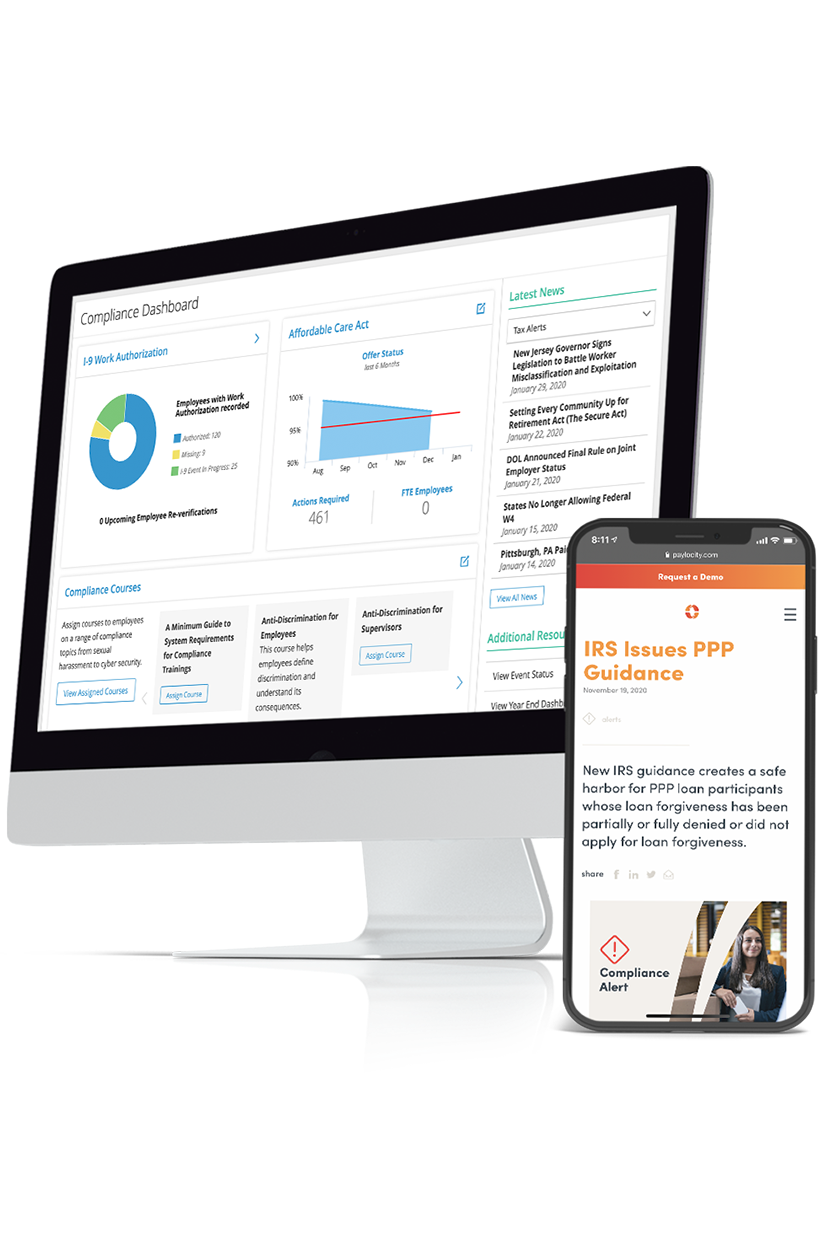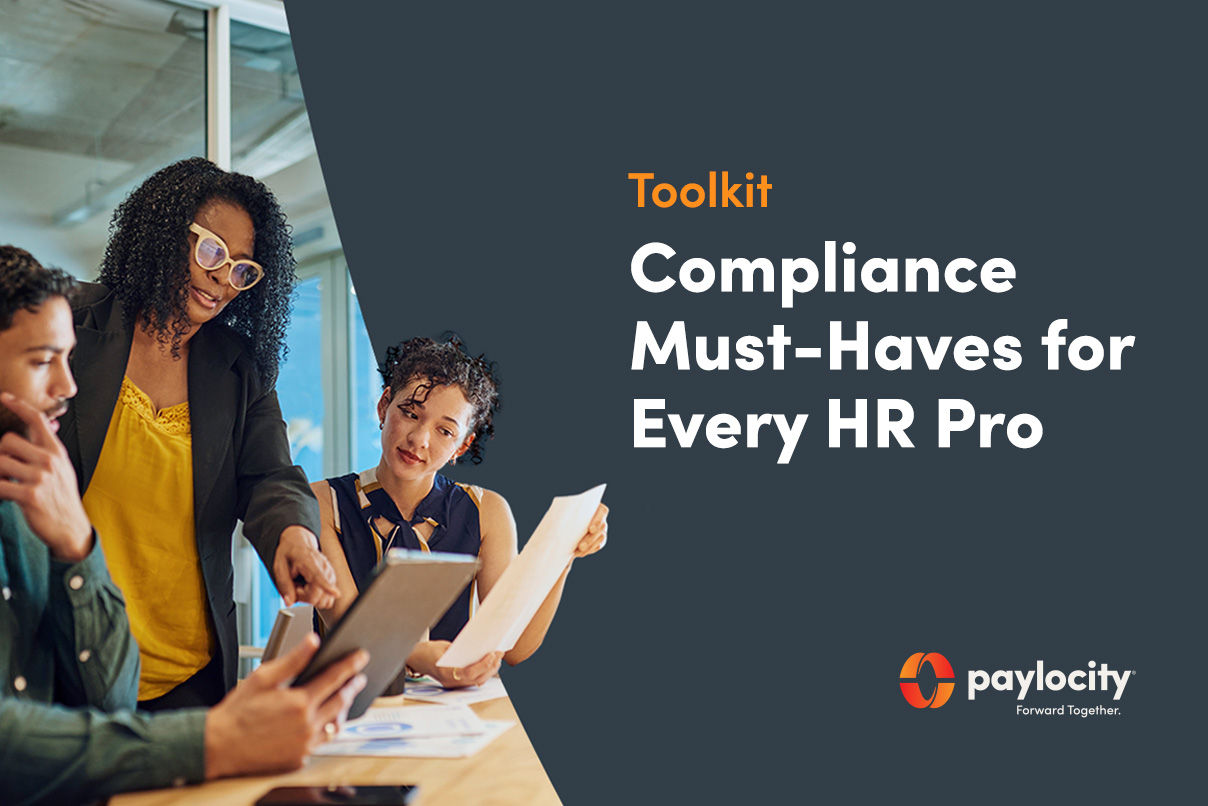
HR’s Guide to the New I-9: FAQs on Remote Verification and More
How can one little form be so complicated?
On July 31, 2023, the Department of Homeland Security (DHS) ended temporary policies related to COVID-19 for employment eligibility verification, and a new Form I-9 was published on August 1, 2023. However, employers may continue using the current form until October 31, 2023.
The changes to the new form are a little tricky to navigate — much like this new world of hybrid work. At least we can say the new Form I-9 is a sign of progress that we’re moving on from the extraordinary circumstances of the pandemic.
Of course, I-9 compliance wasn’t exactly simple to begin with. Let’s take a look at the basics of the I-9 process and decipher the new changes step by step.
Key Takeaways
- DHS has ended COVID-era Form I-9 policies starting August 2023.
- Employers must now use a new (more streamlined) Form I-9 to verify employment eligibility.
- Employers not enrolled in E-Verify during the temporary flexibility period must physically inspect eligibility documents that were verified remotely by August 30, 2023.
- There is a new alternative procedure for examining an employee’s documents remotely, provided you are an employer in good standing with E-Verify.
What Is Form I-9?
Administered by U.S. Citizenship and Immigration Services (USCIS), Form I-9 is used to verify the identity and employment authorization of individuals hired to work in the United States.
When Congress passed the Immigration Reform and Control Act (IRCA) of 1986, the law required that every employer who recruits, refers for a fee, or hires an individual for employment in the U.S. must complete Form I-9 for that individual, whether they are citizens or noncitizens. The act was designed initially to deter illegal immigration to the U.S.
To comply with the IRCA, employers must:
- Verify the identity and employment authorization of each person they hire.
- Complete and retain a Form I-9 for each employee.
- Refrain from discriminating against individuals on the basis of national origin, citizenship, or immigration status.
There have been a few updates since then, but particularly notable was the temporary flexibility put into place in 2020 due to the pandemic. These temporary policies provided special provisions to verify employment eligibility of remote workers.
Updated Form I-9: What’s Changed in 2023?
There are several changes to the actual Form I-9, as well as new guidelines for employers that utilize E-Verify for remote verification.
Let’s start with the good news: The instructions have been reduced from 15 pages to just eight! Other resources and reformatting should make the I-9 a little easier to complete, including these revisions:
- The fillable form is now compatible with mobile devices and tablets.
- Section 1 – Preparer/Translator Certification was moved to a separate supplemental document (Supplement A).
- Section 3 – Reverification and Rehire was moved to a separate supplemental document (Supplement B).
- The list of acceptable documents has been updated.
- A new checkbox can be used to indicate remotely examined documents under the new DHS optional alternative procedure (see What Are the New Guidelines for Verifying Remote Employees below.)
While there are a few other Form I-9 updates, the big question everyone’s asking is: How do I verify remote employees moving forward? We’ll get to that in just a minute!
Updated Form I-9 Sections and Supplements
The new Form I-9 has two main sections and two supplements:
- Section 1: Employee Information and Attestation — completed by employees
- Section 2: Employer or Authorized Representative Review and Verification — completed by employers
- Supplement A: Preparer and/or Translator Certification for Section 1 (formerly included in Section 1) — completed by individuals who assist employees in completing or translating Section 1.
- Supplement B: Reverification and Rehires (formerly Section 3) — completed by employers for employees who are rehired or whose employment authorization has expired.
When Was the I-9 Form Last Updated?
On March 20, 2020, DHS announced temporary flexible policies that deferred compliance of physical presence requirements for remote workers (with some restrictions.) As the pandemic wore on, these flexibilities were extended.
On July 31, 2023, DHS ended the temporary policies. The new form was released August 1, 2023, at which time a revised optional alternative for examining Form I-9 documents remotely also went into effect.
Who Must Use the New I-9 Form?
All U.S. employers must properly complete Form I-9 for each individual they hire for employment in the United States. This includes citizens and noncitizens. Both employees and employers (or an Authorized Representative of the employer) must complete the form.
The newest version was released August 1, 2023, and must be used by employers starting November 1, 2023.
When Do I Have to Use the Updated I-9 Form?
For employees whose documents were inspected remotely during the temporary flexibilities, employers must complete in-person physical document inspections by August 30, 2023. The previous version of the form (dated 10/19/19) may be used through October 31, 2023.
Beginning November 1, 2023, only the new form (dated 08/01/23) may be used. There is also a revised Spanish Form I-9 (dated 08/01/23), which is only available for use in Puerto Rico.
When Does an I-9 Have to Be Reverified?
Employers must reverify an employee if their temporary employment authorization or the authorization document has expired. However, note that if you were not enrolled in E-Verify during the temporary flexibility period, you will have to physically inspect eligibility documents that were verified remotely by August 30, 2023.
Employers may choose to use an authorized representative to complete the in-person inspection as needed.
How Likely is an I-9 Audit?
The chances of an I-9 audit are not as important as the risks of not being prepared and in compliance. Failure to ensure proper completion and retention can result in civil money penalties and, in some cases, criminal penalties.
That’s why it’s essential to have solid onboarding processes and routinely audit your I-9 records. This best practice is made much easier with automation and reporting built into an HR compliance dashboard!
Learn More: HR Compliance 101: Fundamentals for HR Professionals
What Are the New Guidelines for Remote I-9 Verification?
Qualifying employers who participate in E-Verify and are in good standing may choose to examine an employee’s documents remotely. While this alternative procedure is optional, employers who choose to offer the alternative procedure to new employees at an E-Verify hiring site must do so consistently for all employees at that site.
The New Remote I-9 Verification Process
Here are the basic steps for the remote examination of employee documents:
- The employee submits copies of acceptable documents to show they are eligible for work in the U.S.
- Employers examine these copies to ensure they relate to the individual and appear genuine.
- Employers conduct a live video interaction with the individual, who must present the same documents for inspection during that interaction. Employers may use an Authorized Representative for this step (see below.)
- Retain copies of the documentation for as long as the employee works for you, plus the specified period after their employment has ended.
- For terminated employees who worked less than two years, you must retain for three years after the first day of employment.
- For terminated employees who worked more than two years, retain the I-9 for one year after the date the employee stopped working.
- On the new Form I-9, check the box to indicate that you used an alternative procedure in the “Additional Information” field in Section 2.
Who is an Authorized Representative?
Employers may designate an Authorized Representative to act on their behalf to complete Section 2. An Authorized Representative can be any person an employer designates to complete and sign Form I-9 on their behalf. Employers are liable for any violations in connection with the form or the verification process.
Also note, whoever physically inspects the employee’s documents — whether that’s an Authorized Representative or someone internally — that person must complete Section 2 of the form.
Can I Use the New Alternative Procedure to Remotely Verify Employees Who Were Hired During the COVID-19 Flexibility Period?
If an employer was not enrolled in E-Verify, any employees who had their employment eligibility documents verified remotely during the COVID-19 flexibility timeframe (3/20/20 to 7/31/23) still need their original I-9 form notated with the actual physical inspection date in Section 2.
This needs to happen by August 30, 2023. Here are some examples of what that would look like.
If an employer was enrolled in E-Verify and meets certain conditions, they may use the alternative procedure to satisfy the requirement to physically examine Form I-9 documents that were remotely examined under the COVID-19 flexibilities.
To meet the conditions, the employer must have:
- Been enrolled in E-Verify during the COVID-19 flexibilities;
- Created a case in E-Verify for that employee (except for reverification);
- Performed remote examination of an employee's documents between March 20, 2020, and July 31, 2023; and
- Be currently enrolled and continue to participate in E-Verify.
Can I Continue Remote Verification of I-9 Documentation If I Use E-Verify?
The alternative procedure for remotely inspecting documents is available beginning 8/1/23. Only qualified employers may use the alternative procedure.
A qualified employer is defined as: employers enrolled and participating in E-Verify, and employers in good standing with E-Verify, meaning they comply with the E-Verify Memorandum of Understanding (MOU).
Next Steps for I-9 Compliance
We’ve only hit some of the highlights of I-9 compliance. There are in-depth instructions available on the USCIS I-9 Central website, including easy-to-access links to the complete and correct Form I-9. Also, SHRM has many additional member resources in their I-9 compliance toolkit.
Depending on the scale of your workforce and where your employees are located, keeping up with these new requirements in a post-COVID-era adds more administrative complexities to the HR compliance landscape.
Set yourself up for success with the right tools to save you time and stay on track. As part of our software suite, Paylocity’s HR compliance solution centralizes data, documentation, and workflows so you can manage compliance from a single spot.
See how we can meet your ongoing and future compliance needs. Schedule a meeting with one of our solutions experts.

Keep Up With Compliance
Between constantly changing employment laws and updates to the Affordable Care Act (ACA), keeping your workplace compliant can be a time-consuming and costly challenge. Eliminate the stress and stay up to date with our Compliance Dashboard. View compliance alerts and get a bird’s eye view of what you need to do to avoid fines and penalties.



